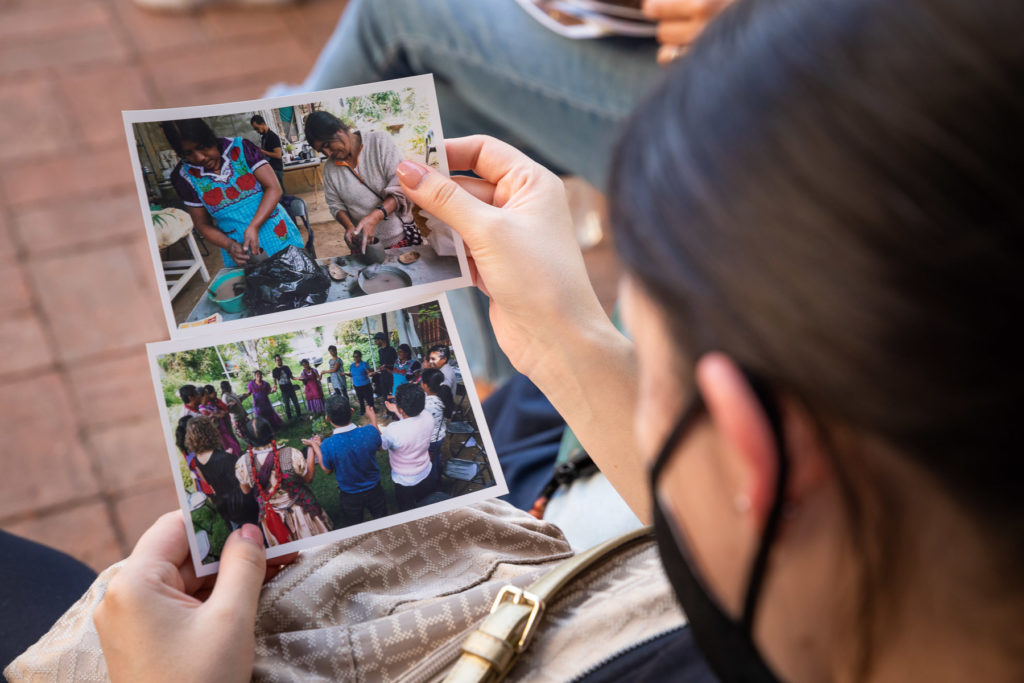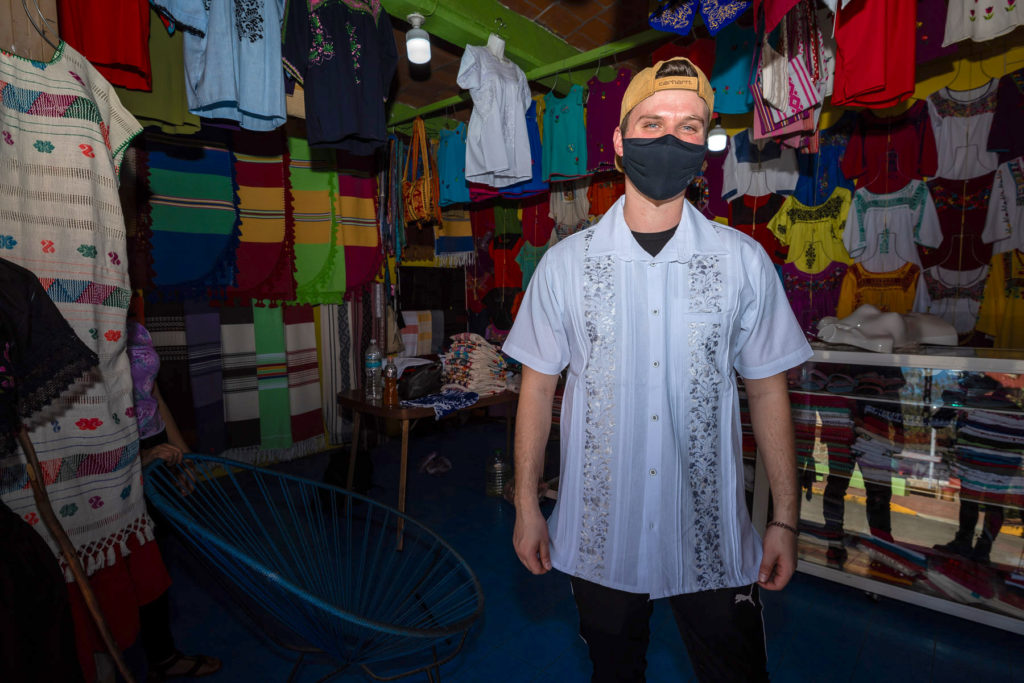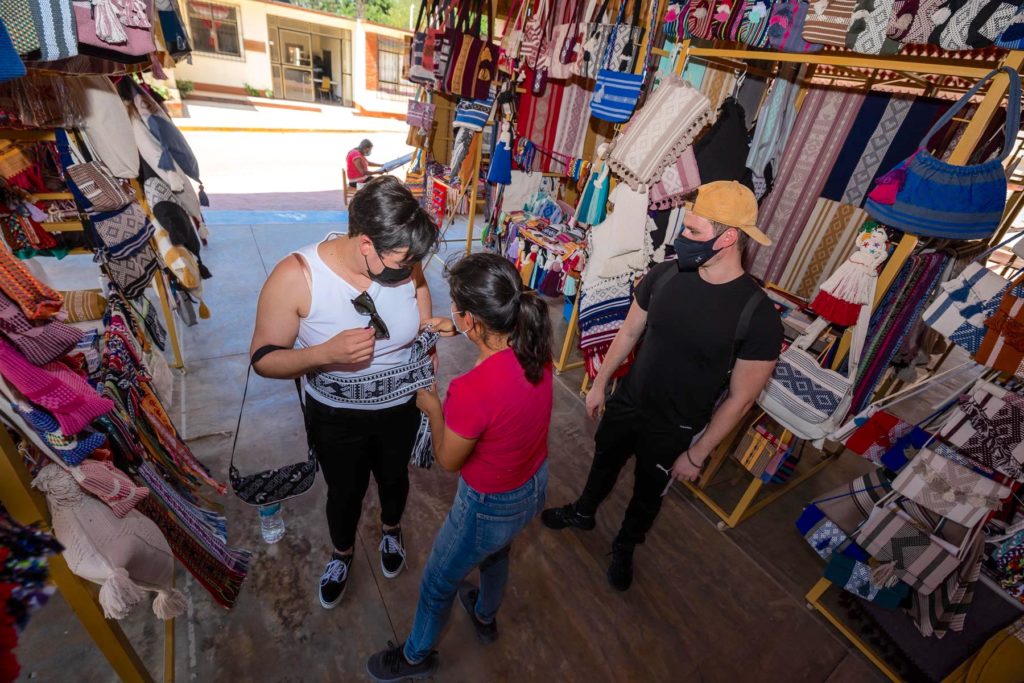For the Mexico Seminar, FIT students were given the assignment to share their reflections, attitudes, impressions, and ideas on our experience in Oaxaca, and the breadth of lecture topics that were heard in Mexico City. GFM Class of 2022 student Zach Mauer shared his thoughts on two topics that were discussed at some length and his plans to incorporate his learnings into his career and his life.

Question Everything
Based on your role in the industry: what can you learn during this seminar? This was my favorite question posed to my cohort while in Mexico. By the end of the seminar, my answer was simple: question everything. As someone who works in marketing, brand development, and content creation, my professional experience has always revolved around the power of storytelling. Marketing is the process of telling stories that people will buy, idealize, and defend. The Mexico seminar reminded me that as a storyteller, and more importantly, as a student, I need to continue to question things. For example: we discuss at great length in several GFM courses the value of writing a competitive analysis of an industry. But what is a competitor? What is a competitor if you change your mindset? If sharing in a community promotes wealth, harmony, and happiness, then what happens to competition? What metrics or KPI’s should a community of artisans measure its success with? For that matter, what is success? The questions are endless when you reframe your perspective from the traditional hyper-capitalist point of view of which we’re accustomed. We were reminded numerous times during the seminar that when working with artisans, you aren’t working with producers, you are working with culture. When one’s perspective changes, and the questions you’re asking change, the story can change. When the story changes, marketers, brand developers, and content creators can promote new stories for people to idealize and defend. Storytelling in this way becomes a frame. Based on your role in the industry: what can you learn during this seminar? Question everything, there are new stories begging to be told.

Slow Fashion
I entered the fashion industry five years ago with a relatively simple definition for what I considered “fashion.” Broadly speaking, I considered fashion to exist at the confluence of art and commerce. But delving deeper, I’ve always defined fashion as a form of communication which involves three different cultural dimensions to provide context for its overall message. I believe that fashion entails a combination of 1) cultural symbols, 2) the culture of people, 3) and the culture of place – ultimately shaping what we wear, how we wear it, and how it’s understood by others. At least, that was always my understanding.
We were told to go into the Mexico Seminar with an open mind, and in doing so, I was able to imagine a new dimension of fashion that I hadn’t previously considered. One of the things that our guest speakers mentioned was that clothing made by artisans isn’t just another means of communication (as defined above). Like other artisanal objects – pottery, sculptures, paintings, several of our speakers told us that these pieces have souls. At first, I wondered if that meant that fast fashion was inherently soulless. But for the rest of the seminar, I also wondered if fast fashion (a product of globalization) was the antithesis of slow fashion, or if I was trying to compare two entirely distinct concepts.

Listening to our guest speakers at the textile museums in Oaxaca inspired me to think of possible ramifications for the contrast of fast vs slow fashion. Clothing made by the artisans is a method of breathing life into traditions that have lived for thousands of years. Fast fashion is the result of a race to the bottom in terms of price and ethical payment of factory workers, as well as a fierce competition of production speed driven by the hunger for convenience by consumers. How could I compare fast fashion and slow fashion? I thought. Slow fashion doesn’t seem to exist in opposition to fast fashion, at least not when viewed through the lens of the artisans we connected with. After my group visited the Navarro sisters in Oaxaca, they told us that they had once taken an accounting class to better understand how they could price their pieces based on their costs. At the end of their story though, the Maestra threw up her hands and started laughing. Our translator told us: “she says that in the end, the accounting class was very difficult. It’s difficult to set the price on something you like to do. They don’t see it as a business. They see it as a way of life.” The Navarro Sisters continued to elaborate on why they found the accounting class challenging. Traditional accounting practices attempt to quantify every scrap and thread that doesn’t end up becoming a part of the finished garment. What’s worse, is that in accounting – these costs are referred to as “waste.” But the Navarro Sisters don’t see their materials in that way. For them, thread is not waste. In this way, slow fashion appeared to exist on a separate plane from fast fashion.


[videopack id=”683″]http://blog.fitnyc.edu/gradstudies/files/2022/03/Untitled.mov[/videopack]
The Navarro Gómez family invited GFM students into their home to share about their work and their lives. Video by Eva Lépiz.id = videopackOn my group’s excursion to San Antonino, we were shown a white dress that had been passed down and worn by Reina’s family for 47 years. It had been repaired, resewn, and re-embellished more times than she could count. I immediately thought of the clothes in my own closet: would I keep an article of clothing for 47 years? When an article of clothing, or even a piece of pottery has cultural meaning, when it channels a centuries old tradition, the object becomes more than just a shirt or dress. Again – how could I compare a 47-year-old dress with fast fashion? I thought of my closet full of Calvin Klein sweatshirts. How could I compare them with a dress that has existed in Reina’s family for almost twice as long as I have been alive? My sweatshirts were born out of trends, but their dress was a conduit, it has a soul.


I purchased two embroidered shirts at the market in San Antonino, and I did so on the promise to myself that I would commit to making the two shirts last in my wardrobe for the next 47 years. One of our speakers mentioned that slow fashion has become trendy in the fashion industry, which is great. But one of the things that really registered with me was that to be truly impactful, slow fashion needs to become more than a trend: it needs to be a commitment. As a fashion stylist, I’m fairly attuned to the dimensions of fashion that I mentioned earlier: symbols, people, and place. I know that I can make the two embroidered shirts last for decades if I commit to it. My reasoning being that if I can start making better decisions when purchasing new pieces, maybe I can help change other peoples’ minds about their decisions.
I’ll admit that the idea of clothing having souls was new to me, but some of the ideas discussed during the Mexico seminar were familiar. Several speakers discussed the concept of sustainability, a topic heavily discussed during the GFM Seminar in New York. I often found myself remembering a moment that happened during the New York seminar months before. One of our guest speakers was asked along the lines of: “Which brands are currently doing exceptional work in the field of sustainability?” The asker of this question had a clear intention of wanting to purchase clothes from whatever sustainable brands the speaker would mention. But instead of giving a list of brands, the speaker aptly responded: “If you’re looking to be more sustainable, start by looking at what’s already in your closet.” The speaker went on to say that increasing the life of the products we already own is the best way that we can individually be more sustainable. At both seminars we’ve had experts in the fashion industry advise that the answer to society’s mounting global problems isn’t more consumption. Specifically, during the Mexico Seminar, we learned that demanding too much, too fast, ruins the slowness of the artisan’s design process. I wondered if it was consumption, and not fast fashion that existed in opposition to slow fashion.
Our guest speaker, Anna Paula Fuentes told us that if the process stops being small-scale, it stops being artisanal. Selling, in this way, is only a quick answer to the challenges facing artisan communities. In our Global Politics and Trade course last semester, we discussed the fact that we are living in a period of hyper-globalization. Speed and convenience are highly prioritized, but hyper-globalization stands poised to compromise the cultural essence of what these artisan communities are creating. In this way, overconsumption doesn’t just run counter to slow fashion and the centuries old traditions of the artisans, it becomes a threat to their very existence.


The seminar ended two weeks ago, and my mind keeps going back to the 47-year-old dress. It goes back to the two embroidered shirts I bought at the market in San Antonino. It goes back to sitting in a courtyard of stone with my cohort, passing around clay bowls and photographs. I think about concepts like commitment, and waste. Ultimately, however, I continue to think about overconsumption, the threat it poses, and how as a marketer I can use storytelling to combat it.



